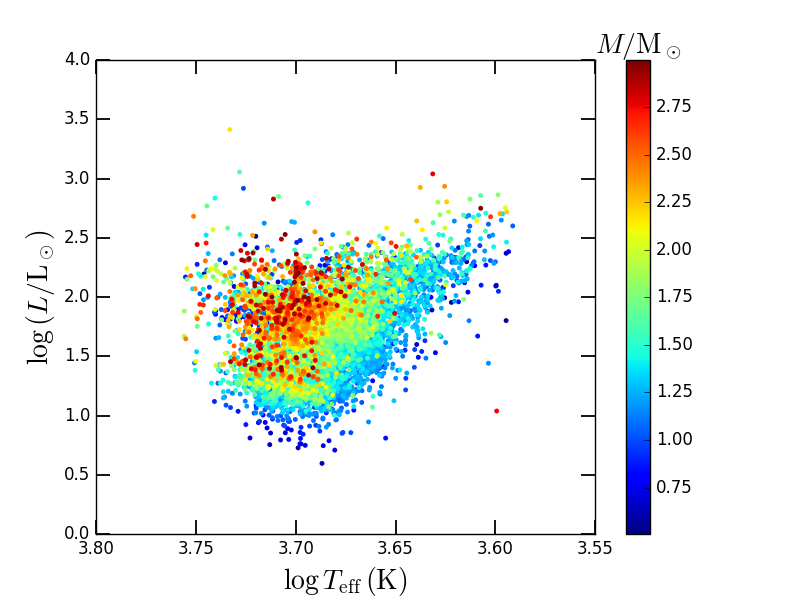The seismic space surveys (CoRoT, Kepler) have demonstrated our ability to extract from light- curves of red giants, seismic indices that characterize in first order the oscillation spectra of these objects, such as color indices characterize the classical stellar spectra. By combining these indices with seismic scaling relations, it is possible to derive fundamental parameters of the stars, such as mass, radius and surface gravity, independently of stellar models. Applied to large sets of objects, these indices have paved the way for what it is now called the ensemble Asteroseismology, with many applications in related fields such as the study of the stellar populations synthesis and Galactic dynamics ; their potential synergy with the future GAIA data opens interesting perspectives.
The light-curves of redgiants have also unveiled the presence of a signal characterizing the stellar granulation, which is a superficial signature of convection inside the star. As for the seismic indices, it is possible to extract in rather easy way the characteristic parameters of stellar granulation. These parameters also obey some scaling relations, which in addition to seismic indices provide information about the surface layers of the star (see the news).
In the framework of the European SPACEINN (FP7) project, which has started on January 2013, the Laboratoire d’Etudes Spatiales et d’Instrumentation en Astrophysique (LESIA) has developed The Stellar Seismic Indices (SSI) data base. The light-curve analysis pipeline has been tested and characterized in terms of bias and accuracy.

About 320,000 light-curves have been analyzed without any a priori on the type of star considered. Among them, stellar indices have been extracted for about 18,000 red giants, among which 5,000 were not known as red giant. These data constitute the largest dataset of this type available at present time.
These data are now accessible from the SSI web site (http://ssi.lesia.obspm.fr/ ) and will also be soon accessible through the VO-Paris Data Centre.
Combined with effective temperature measurements, and using seismic scaling relations, these indices permitted to derive the mass, radius, and surface gravity (log g) for about 13,000 of the redgiants observed by the space mission Kepler. These measurements permit to characterise a large sample of stars ; this is illustrated in Figure 1 where the radii, masses and effective temperatures have been used to locate the stars in the Hertzsprung-Russel diagram completed by the mass information (color scale).
Reference
– de Assis Peralta R., Samadi R., Michel E., 2016, MNRAS, submitted
People who have contributed to the development of the data base and the extraction pipeline : M. Abed, E. Michel, R. de Assis Peralta, C. Renié, R. Samadi.
SPACEInn is a project funded by the European Union under the Seventh Framework Programme (FP7) with the mission to promote the awareness and the use of existing seismic data within the stellar physics community and beyond.
CoRoT, launched December 26, 2006 is a pioneering space mission in stellar seismology and exoplanet research. Born of a French initiative, its development was conducted by the CNES in partnership with several French laboratories (CNRS) and other countries (Europe, Brazil). The final legacy data of the mission have recently been made public (see https://www.obspm.fr/publication-des-donnees.html).
Kepler is a space mission launched by NASA to find terrestrial planets and other small bodies that orbit other stars. To learn more about the Kepler satellite from NASA : http://kepler.nasa.gov/Mission/QuickGuide/
